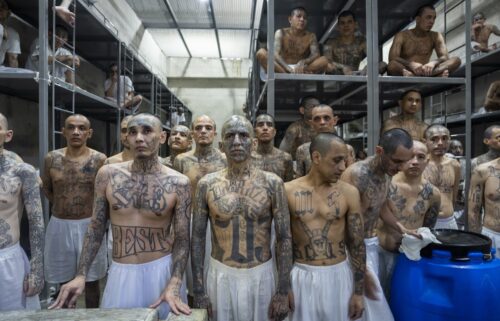Avlon: NYC Board of Elections needs to be ripped up by the roots
By Gregory Krieg, Ethan Cohen and Adam Levy, CNN
The campaign to become New York City’s next mayor has come in for another twist.
On Tuesday, the City Board of Elections released new numbers that suggested Brooklyn Borough President Eric Adams’ lead in the Democratic primary had narrowed in the first set of tabulated ranked-choice voting results. Former Sanitation Commissioner Kathryn Garcia, in this preliminary count, had nearly closed the gap, giving Adams a two-point lead.
But within hours of the new figures coming online, the board backtracked — following questions from the Adams campaign and others — and acknowledged a “discrepancy” in its counting process. It subsequently removed the data from its website. Late Tuesday night, the body put out another statement, this time revealing it had mistakenly included 135,000 test vote records in the initial tally. The count will be re-run once the slate is cleared.
“Board staff has removed all test ballot images from the system and will upload election night results, cross-referencing against election night reporting software for verification,” the BOE said through its Twitter account. “The cast vote record will be re-generated and the RCV rounds will be re-tabulated.”
The mess amounted to a realization of many New Yorkers’ well-founded worries over the board’s capacity to competently manage the ranked-choice system, which is making its citywide debut. The BOE has a rotten reputation in the city and is widely regarded as a hub for political patronage jobs. Tuesday’s count was, in itself, a dry run ahead of the final count, which will not take place for weeks, as absentee ballots are cross-checked and, in some cases, cured if voters respond to notices about minor errors.
In flubbing the exercise, the board also risked handing additional fodder to right-wingers in states and municipalities across the country, who might now seek to parlay the error into momentum for suppressive new voting laws.
In a statement late Tuesday, Wiley slammed the BOE and described the erroneous count as a symptom of longstanding institutional issues.
“This error by the Board of Elections is not just failure to count votes properly today, it is the result of generations of failures that have gone unaddressed,” Wiley said. “Today, we have once again seen the mismanagement that has resulted in a lack of confidence in results, not because there is a flaw in our election laws, but because those who implement it have failed too many times.”
Garcia joined the chorus within the hour, defending the move to ranked-choice voting, which was approved in a 2019 ballot measure, while also calling on the board to reveal more details about Tuesday’s fiasco.
“The BOE’s release of incorrect ranked choice votes is deeply troubling and requires a much more transparent and complete explanation,” Garcia said. “Every ranked choice and absentee vote must be counted accurately so that all New Yorkers have faith in our democracy and our government.”
Hours before the BOE disclosed the mistake, Adams sent out a pointed statement asking why the total number of votes had gone up so much since last week.
That figure, as of last Tuesday night, was 799,827. One week later, the preliminary results included 941,832 votes. The total includes outstanding early voting and Election Day votes that hadn’t been counted yet. Valerie Vazquez-Diaz, a spokesperson for the Board of Elections, told CNN that no absentee ballots had been added into the mix.
Later, Adams was more forgiving in his response to the board’s eventual apology.
“Today’s mistake by the Board of Elections was unfortunate. It is critical that New Yorkers are confident in their electoral system, especially as we rank votes in a citywide election for the first time,” he said in a statement. “We appreciate the Board’s transparency and acknowledgment of their error. We look forward to the release of an accurate, updated simulation, and the timely conclusion of this critical process.”
The new numbers — whatever they turn out to be — do not include more than 120,000 absentee ballots that have yet to be counted, but the tightening at the top offers a glimpse ahead to what could be a remarkably narrow final count. The next round of ballot tabulations won’t be announced for another week, and the process is not expected to be finished and certified for at least two more, meaning the leading campaigns are entering a new phase of uncertainty — and New York City Democrats could be in line for a shocker.
Garcia and Adams both addressed the possibility that the ranked-choice system could derail Adams’ early lead in their election night speeches. But Adams in remarks this week has effectively projected himself as the winner. Last Tuesday, he all but declared victory at a party in Brooklyn.
“We know that this is going to be layers, this is the first early voting count — we know that. We know there’s going to be twos and threes and fours — we know that,” Adams said at the time. “But there’s something else we know. That New York City said, ‘Our first choice is Eric Adams.'”
Adams, in the initial count of first choice votes, jumped out ahead of Garcia and Wiley by about 11 and 9 percent points, respectively.
Garcia at her own event last week urged supporters and other observers to remain patient and hold out hope that she might clean up on second- and third-choice rankings.
In a statement released shortly after the Board of Elections published the new information, Garcia again mixed caution with optimism.
“Even with today’s ranked choice report we are still waiting for more than 120,000 absentee ballots to be counted and we are confident about a path to victory,” she said. “Once all the votes are counted, I know everyone will support the Democratic nominee and that’s exactly what I intend to do. We look forward to the final results. Democracy is worth waiting for.”
Voters in the Big Apple had the option to rank up to five of the 13 candidates in the race. Since no candidate won a majority of the initial preference votes outright in last week’s vote, the New York City Board of Elections is tabulating voters’ ranked choices to determine the winner.
Tuesday’s release comprises results of early in-person and Election Day votes only. Absentee ballots were not included in this tabulation set due to state laws. They will be counted in the results released beginning next week.
As of Monday, 124,574 Democratic absentee ballots had been returned citywide — more than enough to swing the race. Tuesday also marked the deadline for mail ballots postmarked by Election Day to arrive at election officials’ offices.
In ranked-choice voting tabulations, the candidate with the fewest votes after the initial count is eliminated and all ballots for that candidate are reallocated to the next highest-ranked candidate selected. That process continues with the remaining candidates until two are left, with the winner determined by who has the most votes in that final round.
Former presidential candidate Andrew Yang, who ranked fourth in Tuesday’s tabulated results, conceded his bid for the mayoral nomination last week, saying, “I am not going to be the mayor of New York City.”
This story has been updated with additional developments Tuesday.
The-CNN-Wire
™ & © 2021 Cable News Network, Inc., a WarnerMedia Company. All rights reserved.


